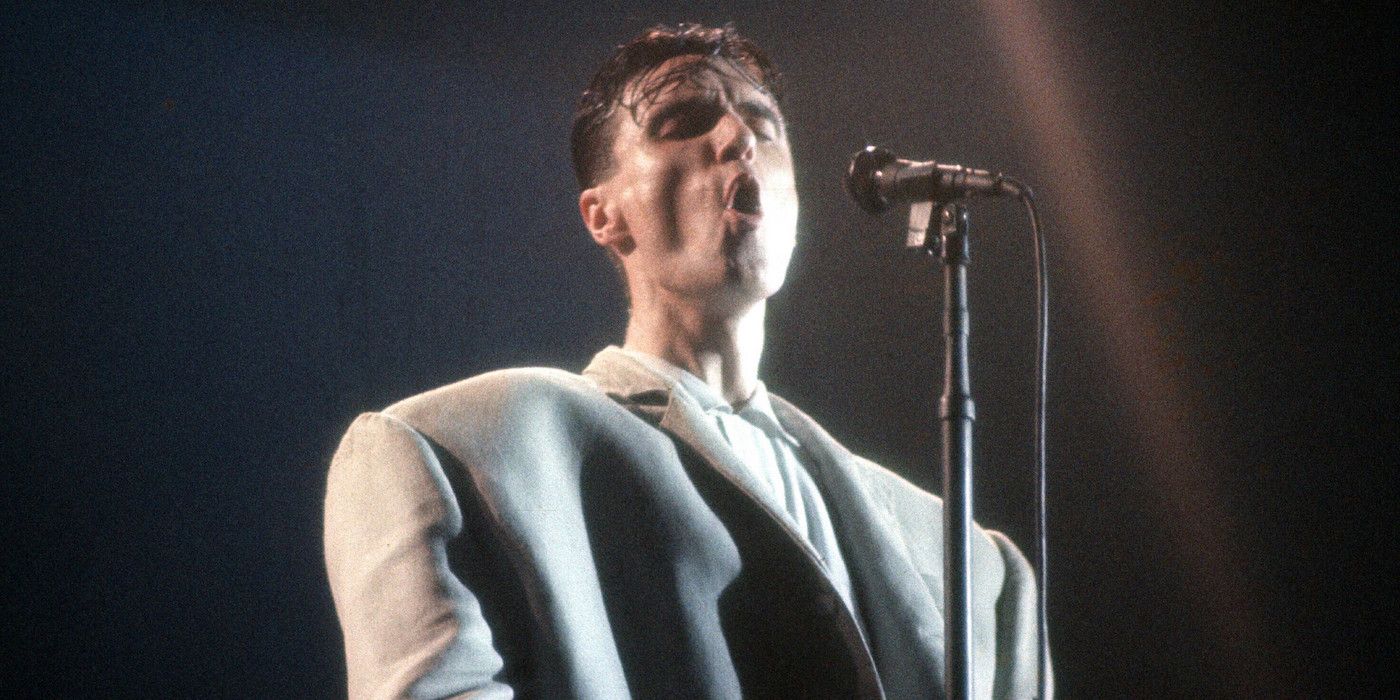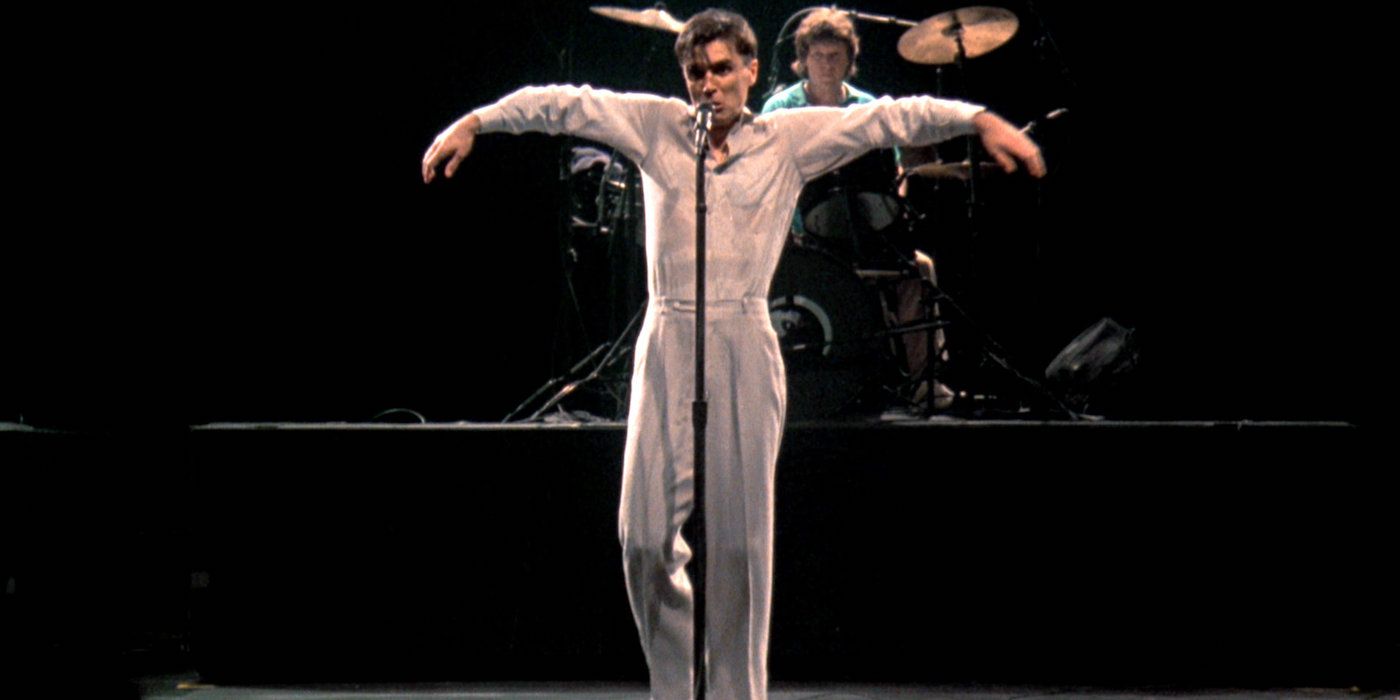The Big Picture
- A24's rerelease of Stop Making Sense is a perfect fit, showcasing the band's artistry and unique approach to live performances.
- Director Jonathan Demme's collaboration with David Byrne captured the essence of the band's music visually, making it a standout concert film.
- The iconic concert film left a lasting mark on pop culture, earning universal praise and setting the standard for musical performances.
A24 sure is one of the most interesting production companies in the business, and last year, they made the surprising, yet great, call by announcing the release of Talking Heads' seminal concert film Stop Making Sense in theaters remastered in 4K. A24 released a wholesome teaser that even features lead singer David Byrne trying to get back into his giant suit and moving around as he did on stage back then. For those of us who arrived late to this party, watching Stop Making Sense on the big screen is a once-in-a-lifetime opportunity.
It may seem strange to see A24 acquiring a concert film and giving it such special treatment, going so far as to rerelease it in theaters, but Stop Making Sense is a perfect fit into what we came to know as this distinguished production company's profile. There's been talk about it getting a rerelease for some time now, but what is it about a live concert that has managed to strike so deep in the hearts of critics and audiences alike?
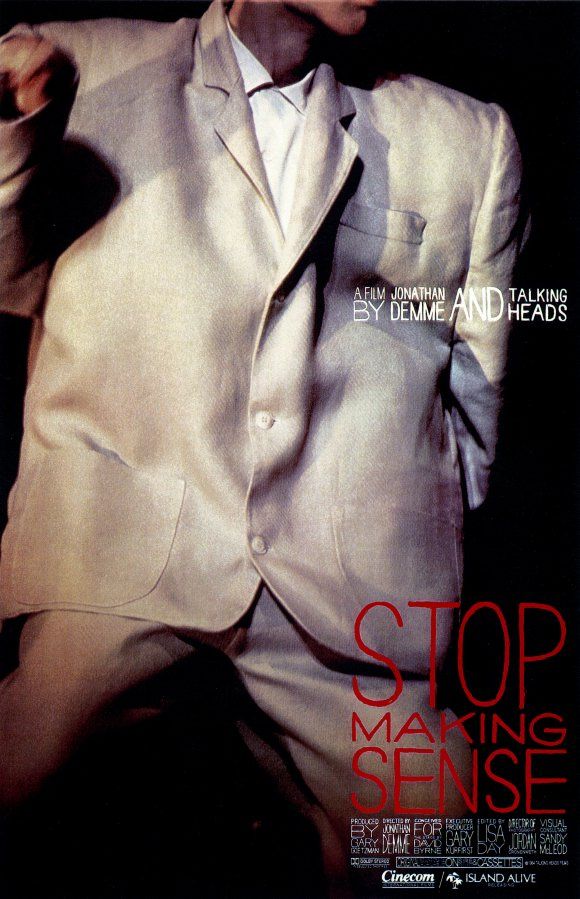
Stop Making Sense
Considered by critics as the greatest concert film of all time, the live performance was shot over the course of three nights at Hollywood's Pantages Theater in December of 1983 and features Talking Heads' most memorable songs.
- Run Time
- 88 minutes
- Director
- Jonathan Demme
- Release Date
- October 19, 1984
- Actors
- Talking Heads
'Stop Making Sense' Was Conceived to Favor the Band's Artistic Approach
The Talking Heads were never known for being a very conventional band. While the late 1970s and early 1980s are largely known for their hard and classic rock groups, the quartet led by David Byrne started making its mark in the New York scene with a sound that was completely different from the ones that dominated parades and helped establish new wave and art rock and, later, usher in alternative rock. For them, it was never about the attitude, but about what music can be as an art form.
So, when they released Stop Making Sense in 1984 what struck audiences and critics was how different it was from any other concert film or footage ever released. The concert starts with David Byrne performing the classic "Psycho Killer" with just a guitar and a drum beat on a tape recorder, and as the concert goes on, he's joined on stage by the remaining members of the band - bassist Tina Weymouth, drummer Chris Frantz, and keyboardist Jerry Harrison - as well as backing musicians. Whenever a new musician joins in, so does a new piece of the stage, until everything is eventually complete when they perform "Burning Down The House."
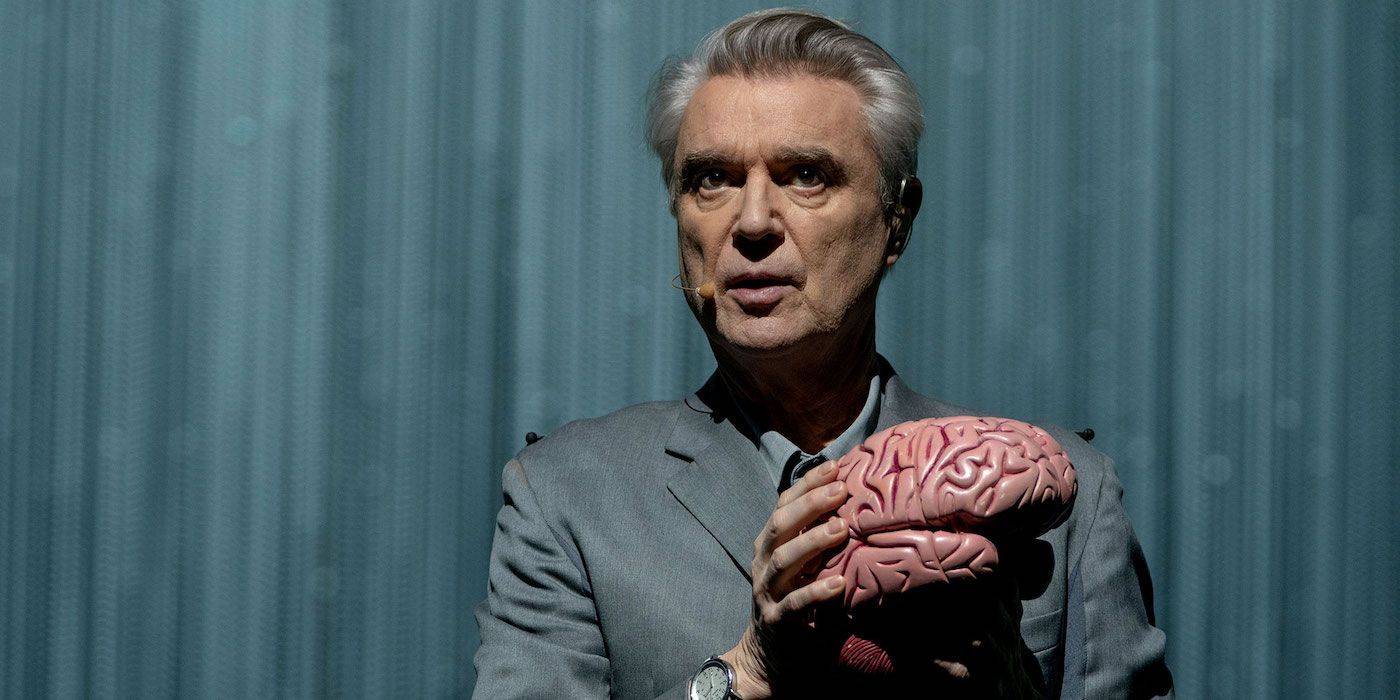
If You Love ‘Stop Making Sense,’ Don’t Miss David Byrne’s ‘American Utopia’
The timeless Jonathan Demme film is not David Byrne's only time collaborating with an auteur filmmaker, and the results are similarly awe-inspiring.This is but one of the visual elements of Stop Making Sense, though. The sound of the group evolves with each new musician joining in, and, once they're all on stage, they provide something new with each new song. The band explores different ways to perform their songs, especially through Byrne's unusual leading performances. Reviews at that time praised his approach to the role of leading man, using his body movements to "enact" each song and moving in an almost hypnotic fashion. In "Girlfriend is Better," he brings forth his iconic big suit, which makes his head appear way smaller compared to the gigantic proportions of the suit. When it's time for "This Must Be The Place," the whole band backs away in synchronized steps to leave room for him to perform an exhilarating dance routine with a lamp.
All that presents a powerful mix of music and aesthetic elements, each of which is carefully thought out. Byrne's big suit, for example, is not merely stage attire, but rather an art piece in itself, as he revealed on the DVD saying it's supposed to symbolize how "physical" music is, and how "often the body understands it before the head." For the performance of "Psycho Killer," also, the shooting sounds are supposed to be "the music hitting" Byrne, as he explained in an interview with David Letterman at that time. Nothing here is by accident.
Director Jonathan Demme Allowed the Band to Fully Express Themselves
When we think of a concert film, what comes to mind is usually a concert with lots of closes on musicians as they perform crazy music stunts, audience shots showing people going wild, and interviews with band members talking about their careers on the occasion. Not on Stop Making Sense, though. What sets it apart from other works of the kind is the fact that is a concert film, not merely the filming of a concert.
This could only be achieved with the help of an actual filmmaker. Director Jonathan Demme (who would eventually earn an Oscar for Best Director with The Silence of the Lambs) worked closely with David Byrne to balance the musical and visual elements. "Jonathan saw things in the show that I didn’t realize were there or didn’t realize how important they were," says the singer in a 2014 Time Magazine interview.
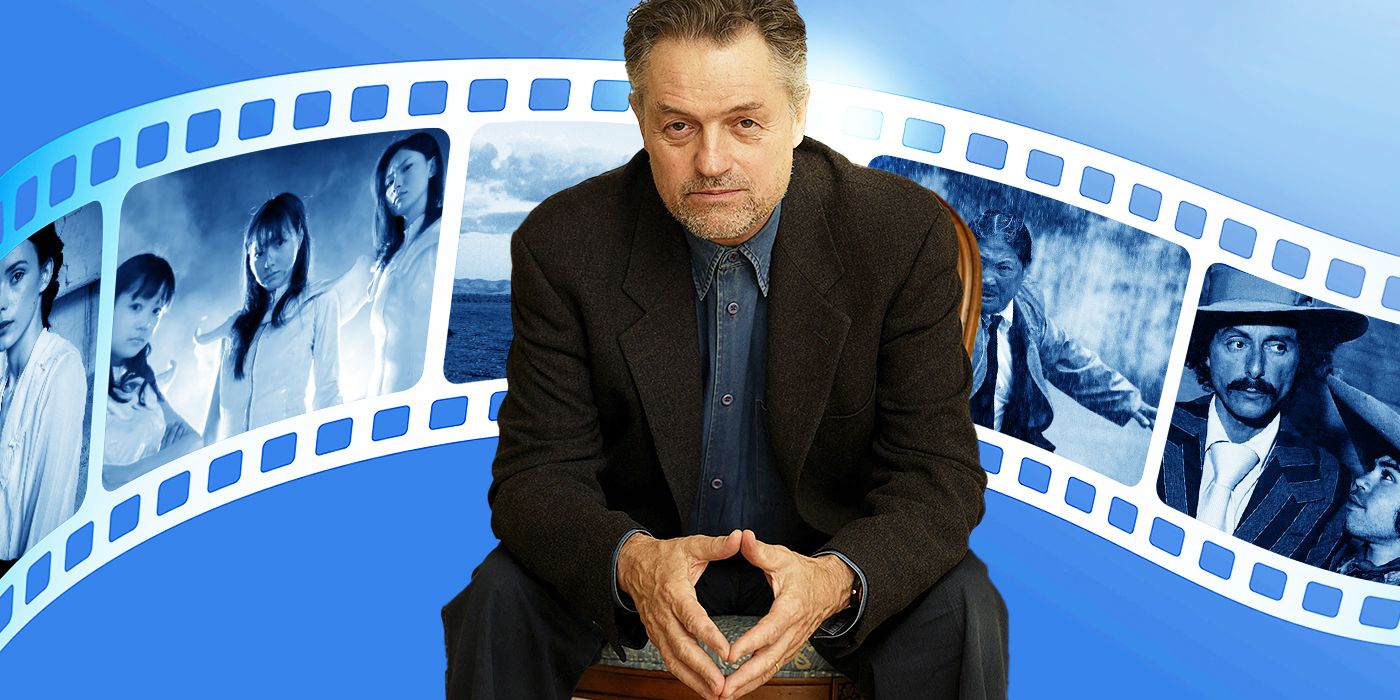
10 Underrated Movies Recommended by Jonathan Demme
The late, Oscar-winning director of The Silence of the Lambs and Philadelphia admired B-movies and meaningful indies.Demme says the show was mostly put together before its recording over four nights at the Pantages Theater in Los Angeles in 1983, but without a cinematic vision behind it, Stop Making Sense would probably just become an ordinary concert film. For example, there are very few audience shots, while the focus on stage was done mostly through wide camera shots, to capture all members together. Byrne credits these decisions to Demme's work, claiming the director saw the band's performance as an "ensemble piece" when comparing it to a scripted film.
While a song or an album by itself relies solely on audio, Demme's technical expertise, combined with Byrnes's artistic vision, is what allows the band to perform the songs visually as well. Music can be listened to on an album, but can only be performed live. Musicians are, by definition, performers, and Demme knew it: "I often find myself feeling that filming music is somehow the purest form of filmmaking. This crazed collision of sound and images, the intense collaboration, these incredibly cinematic performances.”
'Stop Making Sense' Left Its Mark on Pop Culture
Needless to say, Stop Making Sense had nearly universal praise when it came out and is still thought of as one of the best concert films ever released. Iconic movie critic Pauline Kael described it as "close to perfection", an accolade often repeated by many of her peers. On Rotten Tomatoes, the film boasts a 100% approval rating, with a 97% audience score.
According to what was the original intent of Byrne and the Talking Heads, Stop Making Sense is generally seen as a movie, not so much as a concert film, and became the gold standard in terms of musical performances. Byrne's dancing and his robot-like movements became a trademark, and this success allowed him to keep trying to push the boundaries of what a concert film can be, his most recent example being the Spike Lee-directed American Utopia. His big suit also became a pop culture staple, being the subject of many comedy sketches in recent years and even coming back on A24's announcement of the rerelease of Stop Making Sense.
This film really is something unique that, given the opportunity, should be revisited as often as possible. And with its rerelease, Stop Making Sense proves itself once again as a masterpiece. Same as it ever was.
Stop Making Sense is now available to purchase on VOD services.

